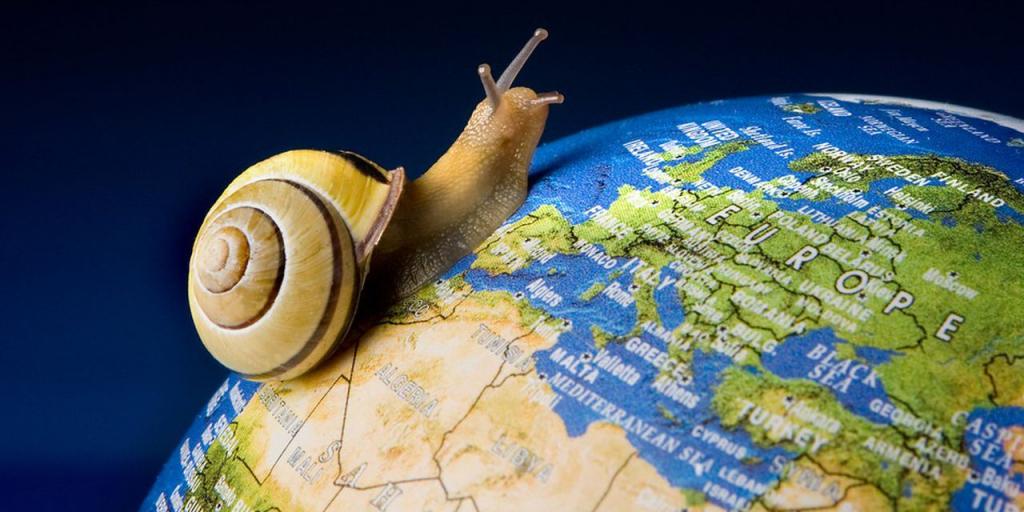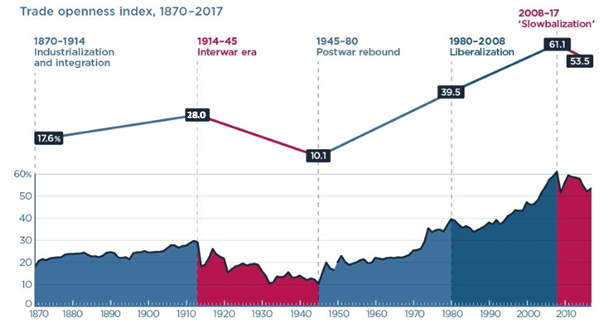
Date: 16 July, 2020 - Blog
The Great Recession was the turning point
According to data compiled by PIIE (Peterson Institute for International Economics), the development of trade openness experienced 5 very distinct phases since 1870. This secular analysis is based on the observation of the ratio of world exports to global GDP.
The five eras of Modern Globalization

Source : Our World in Data, PIIE Chart
- Prior to World War I, the engine of deeper economic integration was the advancement in transportation (industrial revolution fueled by steam shipping and rail transport boom). It took about 45 years for the ratio to progress by 50% (to 28% from 17.6%)
- The interwar period features the worst ever period for trade. A prolonged economic dislocation occurred because of the negative confluence of the communist revolution in 1917, the Spanish Flu in 1918, the Great Depression and the protectionism from 1929-30. The ratio collapsed to 10.1 from 28, i.e. a dramatic contraction of 65%
- The golden age for trade and growth ensued from WWII up to 1980. The ratio practically multiplied by 4 in just 35 years. Under the leadership of the US, new institutions for economic cooperation emerged, namely the GATT. This period of great prosperity concerned essentially Western democracies, Japan, and a few other countries
- The following – fourth – phase was more inclusive. The lowering of trade barriers in emerging markets allowed not only China and India to take-off, but also Latin America. The collapse of the Soviet Union in 1991 favored the gradual liberalization of Eastern Europe too. The trade openness index culminated at its all-time high of 61.1 in 2008. World poverty fell markedly.
Beyond peak globalization
Since a decade now, trade has been growing slower, on average, than GDP. China has deliberately engaged in an economic transformation, featuring the priority of domestic consumption. More recently, the US administration initiated its America First / protectionist policy shift. Lately, the pandemic added fuel to this negative trend. Indeed, world trade will collapse at a double-digit rate in 2020. Many countries are rethinking their trade dependency and may implement export bans over next years.
Several countries look set to turn further inwards
This trend would exacerbate pressure on globalization
- Economic integration is receding for the first time since the Second World War
- This new regime does not inevitably spell the end of globalization…
- … but an accentuation of protectionism would definitely damage global prosperity. It would take decades to reverse it





